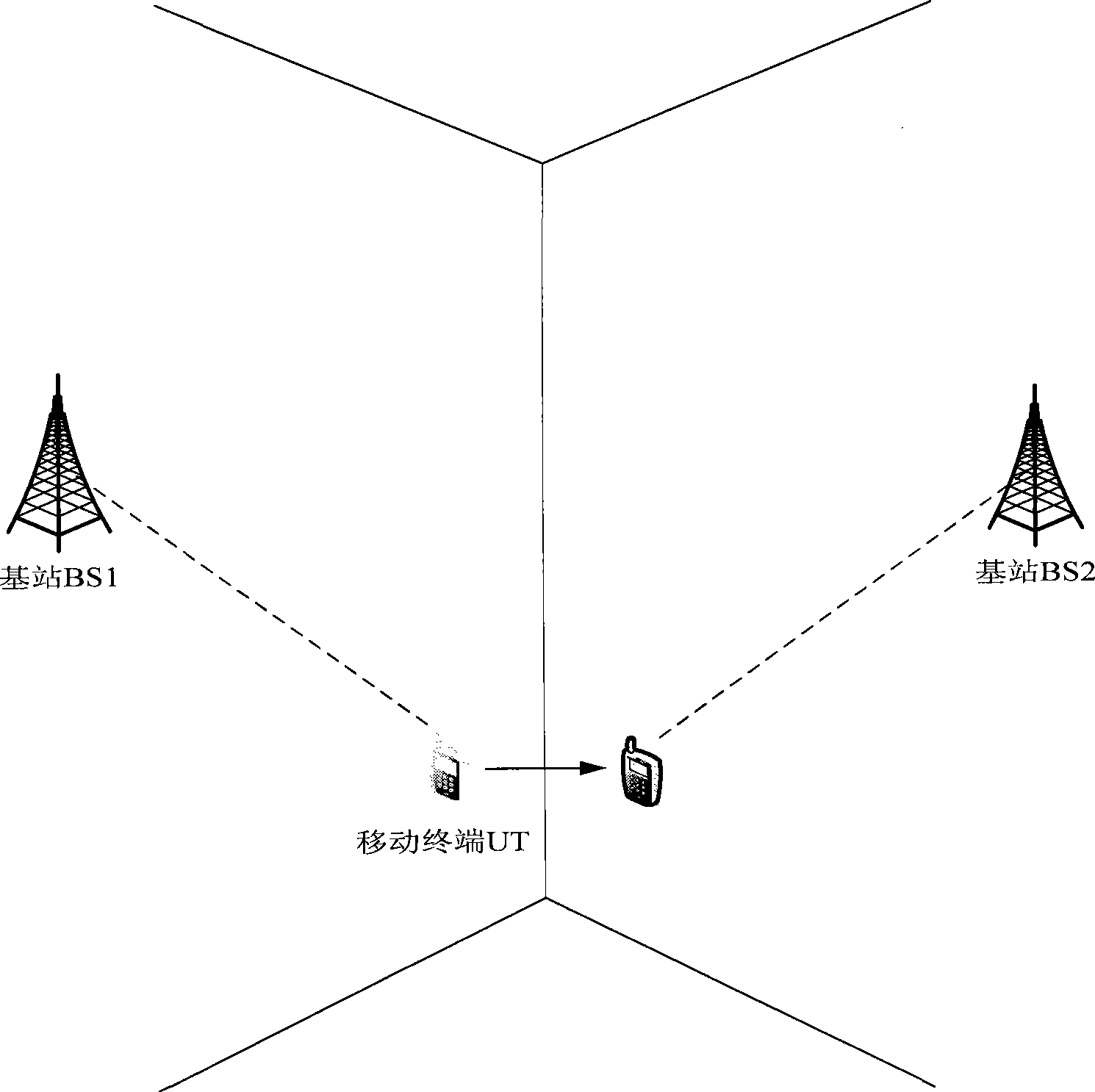Method and system for implementing district switch by mobile terminal
A mobile terminal and cell handover technology, which is applied in the directions of radio/induction link selection and arrangement, selection of devices, etc., can solve problems such as temporary disconnection of mobile terminals from the network, service performance impact, and call drop in the handover preparation stage, and achieve overall improvement. Service transmission quality, improve downlink transmission quality, and facilitate smooth transition
- Summary
- Abstract
- Description
- Claims
- Application Information
AI Technical Summary
Problems solved by technology
Method used
Image
Examples
Embodiment 1
[0072] see image 3 , in this embodiment, there is no subordinate relay of the base station in the network, the base station BS1 is the source base station to which the mobile terminal UT initially attaches, the base station BS2 is the target node of the mobile terminal UT, and BS1, BS2, BS3, and BS4 form a downlink node set, In this embodiment, both the target node and the downlink node are base stations. When the mobile terminal UT moves from left to right, that is, from the coverage of BS1 to the coverage of BS2, the handover process of UT is as follows: Figure 4 shown, including the following steps:
[0073] Step 401: The mobile terminal initially attaches to the base station BS1. When the mobile terminal moves to the cell boundary, a handover threshold is triggered, and a measurement report will be sent to the base station BS1.
[0074] Here, the measurement report contains a list of candidate target nodes {BS1, BS2, BS3...}.
[0075] Step 402: the source base station...
Embodiment 2
[0095] see Figure 6 , in this embodiment, there is a subordinate relay of the base station in the network, the base station BS1 is the source node for the initial attachment of the mobile terminal UT and has no subordinate relay, BS2RN1 and BS2RN2 are the subordinate relays of the base station BS2, and BS2RN2 is the target node of the mobile terminal UT , BS1, BS2, RN2, BS3, and BS4 form a set of downlink nodes. In this embodiment, the source node and the target node are respectively a base station and a relay. When the mobile terminal UT moves from left to right, that is, from the coverage of BS1 to the coverage of BS2, the handover process of UT is as follows: Figure 7 shown, including the following steps:
[0096] Step 701: The mobile terminal initially attaches to the base station BS1. When the mobile terminal moves to the cell boundary, a handover threshold is triggered, and a measurement report will be sent to the base station BS1. The measurement report contains a l...
Embodiment 3
[0121] see Figure 9 , in this embodiment, there are relays subordinate to the base station in the network, BS1RN1 and BS1RN2 are the relays subordinate to the base station BS1, BS1RN2 is the source node for the initial attachment of the mobile terminal UT, and the base station BS2 is the target node of the mobile terminal UT and has no subordinate relays Next, BS1RN1, BS1RN2, BS2, and BS3 form a downlink node set. When the mobile terminal UT moves from left to right, that is, from the coverage of BS1 to the coverage of BS2, the handover process of UT is as follows: Figure 10 shown, including the following steps:
[0122] Step 1001: The mobile terminal initially attaches to BS1RN2. When the mobile terminal moves to the cell boundary, a handover threshold is triggered, and a measurement report will be sent to the base station BS1. The measurement report contains a list of candidate target nodes {BS1RN1, BS1RN2, BS2, BS3RN1, BS3RN2...}.
[0123] Step 1002: The action is simi...
PUM
 Login to View More
Login to View More Abstract
Description
Claims
Application Information
 Login to View More
Login to View More - Generate Ideas
- Intellectual Property
- Life Sciences
- Materials
- Tech Scout
- Unparalleled Data Quality
- Higher Quality Content
- 60% Fewer Hallucinations
Browse by: Latest US Patents, China's latest patents, Technical Efficacy Thesaurus, Application Domain, Technology Topic, Popular Technical Reports.
© 2025 PatSnap. All rights reserved.Legal|Privacy policy|Modern Slavery Act Transparency Statement|Sitemap|About US| Contact US: help@patsnap.com



